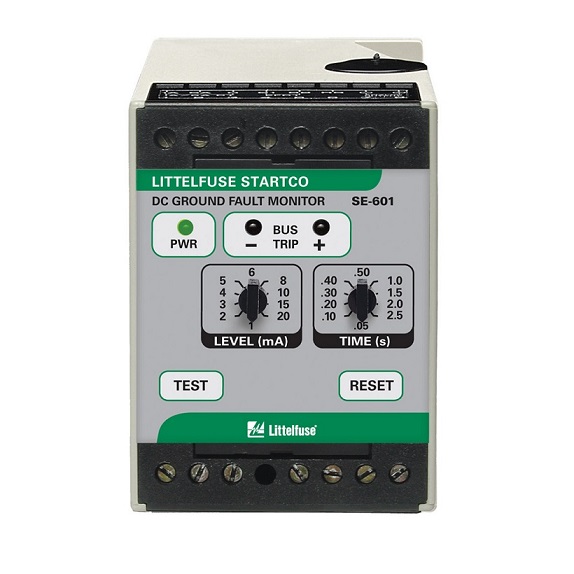
Thanks to Littelfuse, Accilator can offer a wide range of ground fault relay solutions for your needs. We give you the possibility to both monitor ground-fault for ungrounded DC systems as well as grounded and solidly grounded AC systems.
• Adjustable pickup (1–99 %) (non grounded DC 1–20 mA)
• Adjustable time delay (50–2.5 ms)
• Output contacts
• Analog outputs (0–5 V)
• CT-loop monitoring
• Non-volatile trip memory
• Selectable DFT or peak detection filtering
• Harmonic filtering
• Universal power supply
• Microprocessor-based
The primary purpose of grounding electrical systems is to provide protection against electrical faults. However, this was not common practice until the 1970’s. Until then, most commercial and industrial systems were ungrounded. Although ungrounded systems do not cause significant damage during the first ground fault, the numerous disadvantages associated with ground faults resulted in a change to the grounding philosophy. There are other advantages for a grounded system, such as reduction of shock hazards and protection against lightning. Electrical faults can be divided into two categories: phase-to-phase faults and ground faults. Studies have shown that 98% of all electrical faults are ground faults (Source: Woodham, Jack, P.E. “The Basics of Grounding Systems”. While fuses can protect against phase-to-phase faults, additional protection, such as protection relays, are typically required to protect against ground faults.
Ground-fault current is sensed using an SE-GRM series ground-reference module—a resistor network that limits ground-fault current to 25 mA. Its output relay can operate in the fail-safe or non-fail-safe mode for undervoltage or shunt-trip applications. The SE-601 relay can be DIN-rail, surface, or panel mounted.
